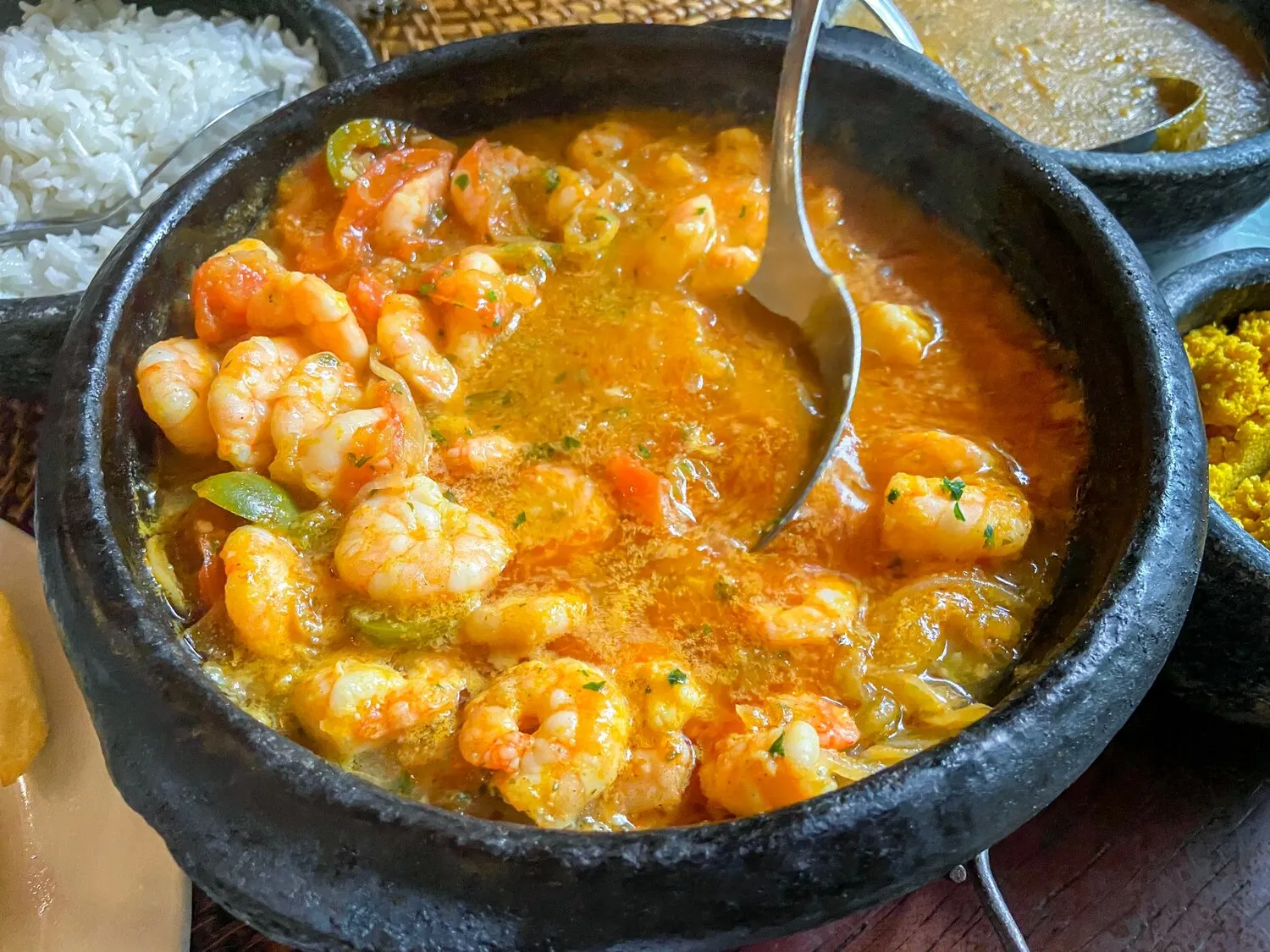
Moqueca de Banana da Terra com Palmito Pupunha
Plantain Moqueca with Pupunha Heart of Palm
Nutrition Facts
* The % Daily Value (DV) tells you how much a nutrient in a serving of food contributes to a daily diet. 2,000 calories a day is used for general nutrition advice.
Moqueca's origins lie in the indigenous culinary traditions of Brazil, later influenced by African and Portuguese cooking techniques and ingredients. The use of seafood and readily available vegetables reflects the coastal environment where it originated. The vegan versions, like the one featuring plantains and heart of palm, are more recent adaptations, showcasing Brazil's rich biodiversity and growing interest in plant-based cuisine.
Moqueca is more than just a dish; it's a symbol of Brazilian coastal cuisine and communal dining. It's often enjoyed with family and friends, representing warmth, hospitality, and the abundance of the land and sea (or, in this case, the land's bounty). The plantain and heart of palm version reflects a modern adaptation to accommodate vegetarian and vegan diets while maintaining the core traditions of the dish.
Regional Variations
While Moqueca is broadly associated with Bahia and Espirito Santo, the variations between regions are significant. Espirito Santo Moqueca typically uses annatto seeds and avoids dendê oil, while Bahian Moqueca usually includes dendê oil and coconut milk.
Communal Eating
Moqueca is typically served in a clay pot directly on the table, encouraging a shared dining experience. This fosters a sense of community and conviviality.
Celebratory Dish
Moqueca is often prepared for special occasions, celebrations, and gatherings, highlighting its importance in Brazilian culture and social life.
This Moqueca offers a delightful balance of sweet, savory, and slightly acidic flavors, complemented by creamy and tender textures.
The ripe plantains contribute a subtle sweetness that contrasts beautifully with the savory broth. The heart of palm (palmito pupunha) provides a mild, slightly nutty flavor and a delicate texture. Coconut milk adds richness and creaminess, while tomatoes, onions, bell peppers, and cilantro provide a vibrant freshness. Dendê oil, if used (though often omitted in modern or health-conscious versions), adds a distinct flavor and orange hue. Lime juice provides a necessary acidity to brighten the flavors.
Use Ripe Plantains
Choose plantains that are ripe but still firm. They should have some black spots on the peel but shouldn't be overly soft, or they will disintegrate during cooking. The ripeness contributes to the sweetness needed to balance the other flavors.
Don't Overcook the Palmito
Heart of palm is delicate and can become mushy if overcooked. Add it towards the end of the cooking process to maintain its texture.
Simmer Gently
Moqueca should be simmered gently rather than boiled vigorously. This prevents the ingredients from breaking down and allows the flavors to meld together slowly and harmoniously.
Adjust the Acidity
The acidity from the lime juice (or sometimes vinegar) is crucial for balancing the richness of the coconut milk and sweetness of the plantains. Adjust the amount to your personal preference.
Consider Smoked Paprika
Adding a touch of smoked paprika can mimic the smokey notes that dendê oil sometimes imparts, adding complexity to the flavor profile, especially when dendê oil is omitted.
Explore additional Moqueca dishes and restaurants
Explore MoquecaDiscover top dining spots and culinary experiences in Cuiabá.
Explore CuiabáLearn more about the food culture, restaurant scene, and culinary heritage of Brazil.
Explore Brazil